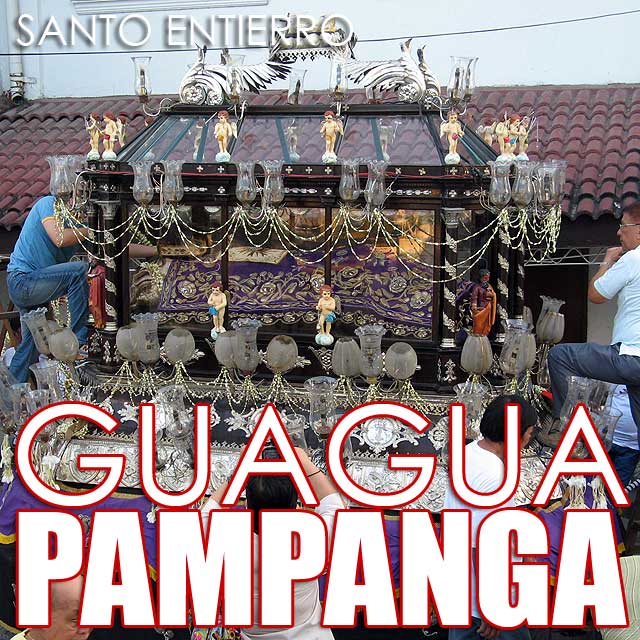
On Easter Sunday, the neighboring towns of Santo Tomas and Minalin are the center of activities in Pampanga. Aside from being Easter Sunday, it's also the town fiesta of Santo Tomas. The town celebrates its fiesta on Easter Sunday rather than on the July 3 feast day of St. Thomas the Apostle.
The night before, a rigodon de honor used to be performed at the Sabado de Gloria Ball called the Thomasian. I remember dancing the rigodon in the 2002 Sabado de Gloria Ball. Sadly, they stopped doing it about two years ago because no one was willing to be hermano and hermana mayor due to the costs that accompany it. While it was still being held, Thomasian was the longest continuously organized rigodon de honor in Pampanga. The oldest surviving rigodon tradition in Pampanga, the El Circulo Fernandino, was not held from 1987 to 1996.

According to Robby Tantingco of the Center for Kapampangan Studies, "The most elaborate salubong are held in front of the churches of Sto. Tomas and Minalin. Shortly before the break of dawn, the brass band plays and an all-girls' choir sing Alleluia as the two santos are positioned face to face. The angel does not immediately appear; instead, she is hidden inside a pusu-pusu (heart-shaped giant banana flower) which opens in five stages, one layer of petals at a time. Each opening is accompanied by the band playing and choir singing which prolongs the whole ceremony. After the salubung (also called pusu-pusuan in these parts), the people go inside the church for the Easter Mass.
"In Sto. Tomas, another quaint tradition follows after the Mass: a group of well-dressed girls and the partners dance and sing, and throw petals on the path of the carroza bearing the statue of the Risen Christ accompanied by a violin. This ritual is called Sagalas."

Later at noon, the Pakbung Hudas festivities are held at the church patio. I missed the Salubong or Pusu-pusuan, as well as the Sagalas. But I just had to write about it to complete this series on Pampanga Holy Week practices. Thank you to the Center for Kapampangan Studies for the video screencaps.
















